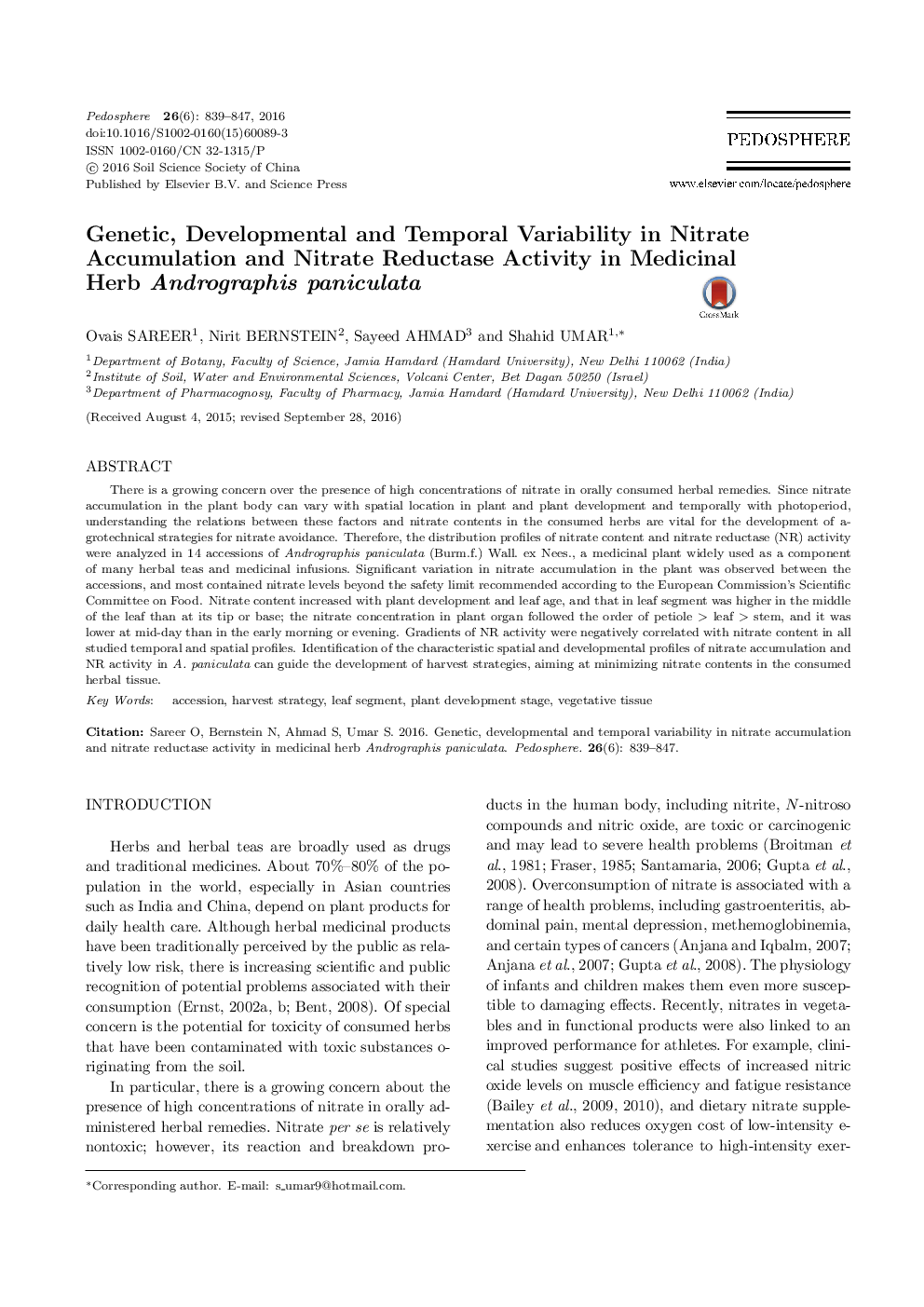| Article ID | Journal | Published Year | Pages | File Type |
|---|---|---|---|---|
| 4581111 | Pedosphere | 2016 | 9 Pages |
There is a growing concern over the presence of high concentrations of nitrate in orally consumed herbal remedies. Since nitrate accumulation in the plant body can vary with spatial location in plant and plant development and temporally with photoperiod, understanding the relations between these factors and nitrate contents in the consumed herbs are vital for the development of agrotechnical strategies for nitrate avoidance. Therefore, the distribution profiles of nitrate content and nitrate reductase (NR) activity were analyzed in 14 accessions of Andrographis paniculata (Burm.f.) Wall. ex Nees., a medicinal plant widely used as a component of many herbal teas and medicinal infusions. Significant variation in nitrate accumulation in the plant was observed between the accessions, and most contained nitrate levels beyond the safety limit recommended according to the European Commission's Scientific Committee on Food. Nitrate content increased with plant development and leaf age, and that in leaf segment was higher in the middle of the leaf than at its tip or base; the nitrate concentration in plant organ followed the order of petiole < leaf < stem, and it was lower at mid-day than in the early morning or evening. Gradients of NR activity were negatively correlated with nitrate content in all studied temporal and spatial profiles. Identification of the characteristic spatial and developmental profiles of nitrate accumulation and NR activity in A. paniculata can guide the development of harvest strategies, aiming at minimizing nitrate contents in the consumed herbal tissue.
